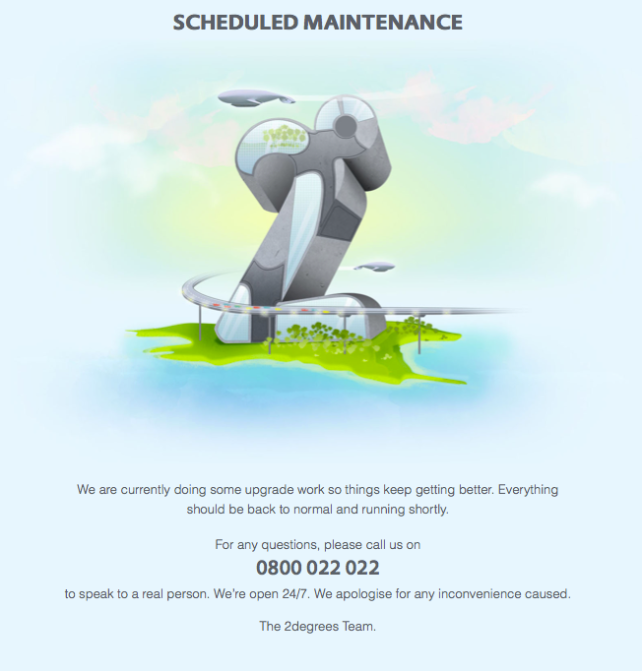Oh the irony. Last week I wrote an article on the role of service resilience in shaping a positive user experience, and today I’m trying to use a basic digital service to charge up a mobile with credit before travelling overseas – and receive the following notification, along the lines of:
Dear customer, unfortunately the opening hours of our digital service are top secret.
Not even an indication of when it may be worthwhile trying again. The local 0800 number is also not of much help to a traveller. The particular incident is just one example of typical quality of service in the digital realm. Last week, before this wonderful user experience, I wrote:
The digitisation of services that used to be delivered manually puts the spotlight on user experience as human interactions are replaced with human to software interactions. Organisations that are intending to transition to digital service delivery must consider all the implications from a customer’s perspective. The larger the number of customers, the more preparation is required, and the higher the demands in terms of resilience and scalability of service delivery. Organisations that do not think beyond the business-as-usual scenario of service delivery may find that customer satisfaction ratings can plummet rapidly.
Promises made in formal service level agreements are easily broken. Especially if a service provider operates a monopoly, the service provider has very little incentive to improve quality of service, and ignores the full downstream costs of outages incurred by service users.
All assurances made in service level agreements with external service providers need to be scrutinised. Seemingly straightforward claims such as 99.99% availability must be broken down into more meaningful assurances. Does 99.9% availability mean one outage of up to 9 hours per year, or a 10 minute outage per week, or a 90 second outage per day? Does the availability figure include or exclude any scheduled service maintenance windows?
My recommendation to all operators of digital services: Compute the overall risk exposure to unavailability of services and make informed decisions on the level of service that must be offered to customers. As a rule, when transitioning from manual services to digital services, ensure that customers benefit from an increase in service availability. The convenience of close to 24×7 availability is an important factor to entice customers to use the digital channel.
